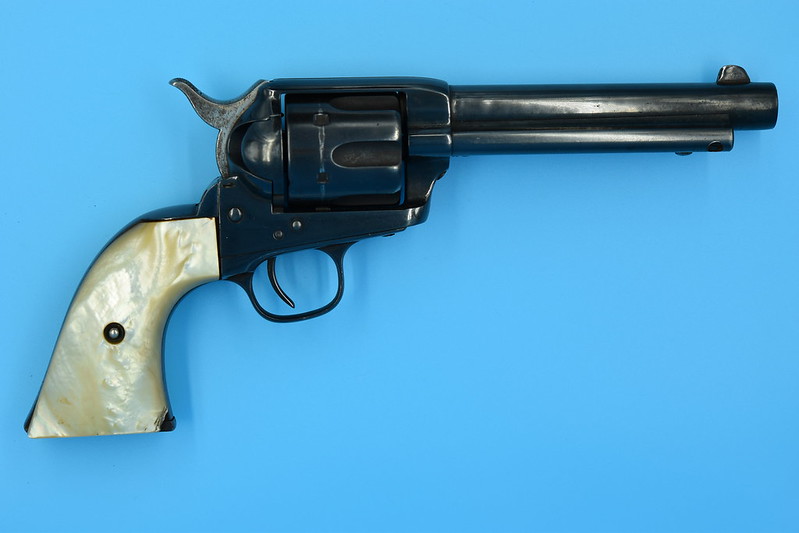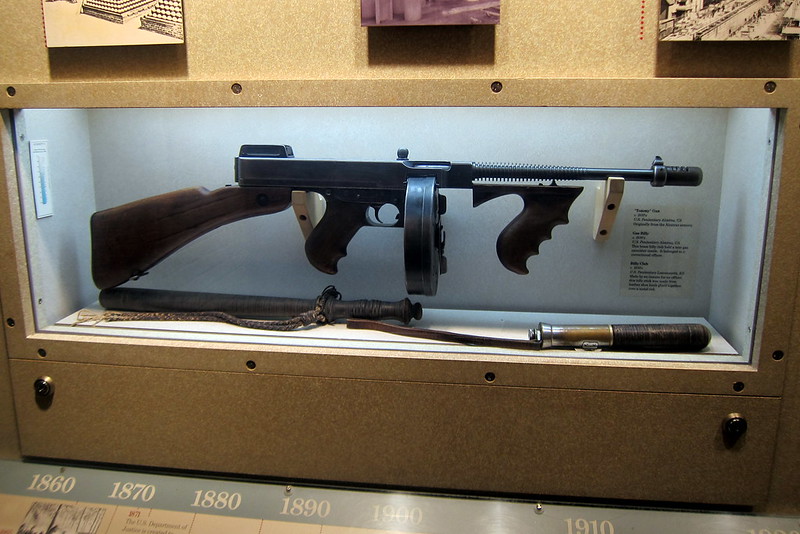Their enduring place in the public imagination prompts reflection on the multifaceted impact of weaponry on our world, emphasizing the need for nuanced discussions about firearms, their historical roles, and the broader implications for society.
Guns have wielded profound influence throughout history, serving as catalysts in wars, revolutions, and moments that have indelibly shaped societies. Hence, there are specific firearms that have left an indelible mark on historical events, crime, and popular culture.
From the iconic to the infamous, these guns have become symbols of power, rebellion, and notoriety. They resonate beyond their utilitarian function, embodying a complex interplay of technological innovation, societal shifts, and cultural evolution.
As we unravel the stories of these notorious guns, we navigate through the crossroads of history where they stood as witnesses and actors alike, perpetuating a fascination that endures in the collective imagination. In this article, together with the gun community platform Arms Directory, we explore the intricate relationship between firearms and the historical tapestry that weaves the fabric of our shared past.
Thompson Submachine Gun
The Thompson submachine gun, affectionately known as the “Tommy Gun,” etched its place in history during the tumultuous times of the 1920s and 1930s. Invented by John T. Thompson, this iconic firearm gained notoriety for its rapid-fire capabilities. Notorious gangsters, including Al Capone and John Dillinger, favored the Tommy Gun, making it synonymous with Prohibition-era crime.
During an era marked by bootlegging and organized crime, the Thompson submachine gun became a symbol of rebellion and lawlessness. Capable of firing up to 600 rounds per minute, it was the weapon of choice for those navigating the dangerous world of illicit activities.
Colt Single Action Army
The Colt Single Action Army, famously dubbed the “Peacemaker,” played a pivotal role in shaping the narrative of the American West during the late 19th century. Introduced in 1873, this iconic revolver quickly became synonymous with the untamed frontier, earning its enduring moniker as the “Peacemaker.”

Embraced by cowboys, lawmen, and outlaws alike, the Colt Single Action Army was renowned for its reliability and firepower. Its introduction marked a shift towards more powerful and practical firearms, contributing to the taming of the wild and lawless territories of the American West.
The revolver’s popularity was not merely due to its functional attributes; it became a symbol of the rugged individualism and perseverance associated with the frontier spirit. Its distinctive design, featuring a single-action mechanism and a rotating cylinder, became emblematic of the challenges and triumphs of the era.
The Colt Single Action Army’s influence transcended its historical context, firmly embedding itself in the popular imagination through Western movies and television shows. Depicted as the sidearm of choice for gunslingers and sheriffs alike, the Peacemaker became an iconic symbol of justice and frontier heroism.
Luger P08
The Luger P08, commonly referred to as the “Luger pistol,” stands as a symbol of German military prowess and innovation during the tumultuous periods of World War I and World War II. Designed by Georg Luger, this semi-automatic pistol gained notoriety for its distinctive toggle-lock mechanism and sleek design.
Introduced in 1900, the Luger P08 became the standard-issue sidearm for the German military during both World Wars. Its precision engineering and semi-automatic capabilities set it apart from other handguns of its time, contributing to its adoption by the German forces. Notably, officers, including high-ranking Nazi officials, favored the Luger as a status symbol, reflecting its association with military prestige and authority.
The Luger P08’s controversial legacy stems from its adoption by the Nazi regime during World War II. The pistol, featuring the iconic swastika on some models, became an emblem of the Third Reich. Its presence in the hands of Nazi officers in photographs and propaganda further solidified its association with the regime’s military might.
Despite its historical significance, the Luger P08’s portrayal in popular culture remains ambivalent. While its engineering brilliance is acknowledged, its association with the Nazi regime has cast a shadow over its legacy. In films, literature, and other media, the Luger is often depicted as a symbol of authoritarianism and oppression, emphasizing its connection to a dark chapter in history.
AK-47
The AK-47, commonly known as the “Kalashnikov rifle,” has left an indelible mark on modern warfare and global politics since its inception in 1947. Designed by Soviet engineer Mikhail Kalashnikov, the AK-47 gained notoriety for its simplicity, durability, and widespread use.
One of the defining features of the AK-47 is its adaptability to various environments and conditions. Its remarkable durability allows it to function effectively in harsh climates, making it a weapon of choice for guerrilla fighters, insurgents, and rebel groups worldwide. This adaptability has contributed to the AK-47’s prominence in conflicts spanning several continents.
The rifle’s impact on global politics is profound, as it has played a central role in numerous conflicts and revolutions. Its widespread availability, often facilitated by illicit arms trafficking, has made the AK-47 a symbol of insurgency and resistance. The rifle’s distinctive silhouette and reputation for reliability have further solidified its iconic status.
The AK-47’s influence extends beyond its battlefield utility; it has become a potent symbol of rebellion and revolution. From the jungles of Southeast Asia to the deserts of the Middle East, the AK-47 has been a tool of choice for those challenging established powers. Its ubiquity in conflicts has earned it the moniker of the “people’s rifle,” reflecting its association with movements seeking autonomy and self-determination.
Conclusion
These notorious guns, from the Thompson Submachine Gun to the AK-47, have left an indelible mark on history and popular culture. Their stories intertwine with wars, crime, and revolutions, reflecting the complex relationship between firearms and society. As symbols of power, rebellion, and technological advancement, these guns have shaped the course of events. Their enduring place in the public imagination prompts reflection on the multifaceted impact of weaponry on our world, emphasizing the need for nuanced discussions about firearms, their historical roles, and the broader implications for society.


Join the conversation!